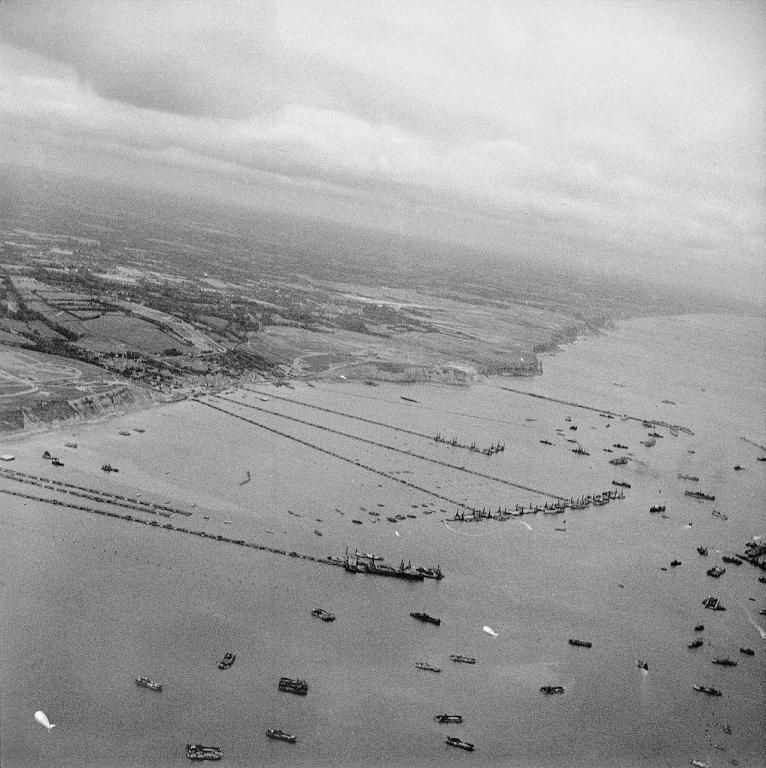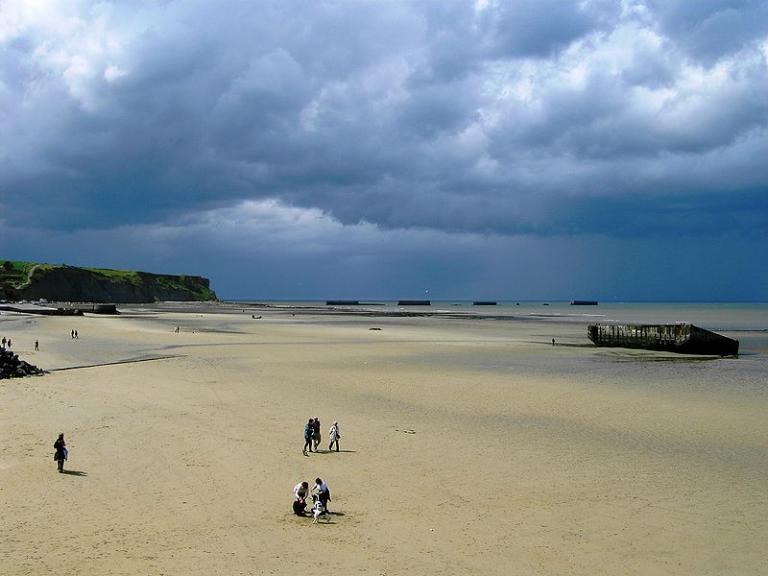
(Wikimedia Commons public domain)

(Wikimedia Commons public domain) photograph.
***
Yesterday, during the opening weekend of the Interpreter Foundation’s Witnesses film, the widow of my late friend, partner, and colleague Dr. William J. Hamblin called my attention to a presentation on the Witnesses that he posted back at the end of 2011. I honestly don’t think that I had ever known of it before. It’s not as flashy as it would likely be had he made it today, with our improved technology; Bill was always up on the latest innovations for computer use in scholarship and teaching. But it’s exceptionally clear and very much worth watching. (Only one off-the-cuff error: Unlike the Eight Witnesses, the Three Witnesses did not touch or “heft” the plates.). Here it is:
“The Witnesses of the Book of Mormon”
How I miss Bill! His sudden early death was a deep personal blow to me, as well as, of course, to his family and his other friends. But, beyond that, what a mind and talent we lost. Far, far too soon. Last week, I dreamed that reports of his death had been mistaken. There he was again, stunning me and another friend with astonished surprise. Then I woke up.
***
Continuing in my elegiac mood: Today is the anniversary of the brilliant, brutal, pivotal D-Day invasion of Normandy, a crucial step in the defeat of European fascism during the Second World War. It’s something upon which to reflect, and it represents thousands upon thousands of unimaginable sacrifices for which we should all be grateful. As a small token of such contemplation, I want to share, yet again, Franklin D. Roosevelt’s eloquent broadcast prayer from 6 June 1944. You can listen to President Roosevelt’s actual delivery here, and this is its text:
Prayer on D-Day, June 6, 1944:
My fellow Americans: Last night, when I spoke with you about the fall of Rome, I knew at that moment that troops of the United States and our allies were crossing the Channel in another and greater operation. It has come to pass with success thus far.
And so, in this poignant hour, I ask you to join with me in prayer:
Almighty God: Our sons, pride of our Nation, this day have set upon a mighty endeavor, a struggle to preserve our Republic, our religion, and our civilization, and to set free a suffering humanity.
Lead them straight and true; give strength to their arms, stoutness to their hearts, steadfastness in their faith.
They will need Thy blessings. Their road will be long and hard. For the enemy is strong. He may hurl back our forces. Success may not come with rushing speed, but we shall return again and again; and we know that by Thy grace, and by the righteousness of our cause, our sons will triumph.
They will be sore tried, by night and by day, without rest-until the victory is won. The darkness will be rent by noise and flame. Men’s souls will be shaken with the violences of war.
For these men are lately drawn from the ways of peace. They fight not for the lust of conquest. They fight to end conquest. They fight to liberate. They fight to let justice arise, and tolerance and good will among all Thy people. They yearn but for the end of battle, for their return to the haven of home.
Some will never return. Embrace these, Father, and receive them, Thy heroic servants, into Thy kingdom.
And for us at home — fathers, mothers, children, wives, sisters, and brothers of brave men overseas — whose thoughts and prayers are ever with them — help us, Almighty God, to rededicate ourselves in renewed faith in Thee in this hour of great sacrifice.
Many people have urged that I call the Nation into a single day of special prayer. But because the road is long and the desire is great, I ask that our people devote themselves in a continuance of prayer. As we rise to each new day, and again when each day is spent, let words of prayer be on our lips, invoking Thy help to our efforts.
Give us strength, too — strength in our daily tasks, to redouble the contributions we make in the physical and the material support of our armed forces.
And let our hearts be stout, to wait out the long travail, to bear sorrows that may come, to impart our courage unto our sons wheresoever they may be.
And, O Lord, give us Faith. Give us Faith in Thee; Faith in our sons; Faith in each other; Faith in our united crusade. Let not the keenness of our spirit ever be dulled. Let not the impacts of temporary events, of temporal matters of but fleeting moment, let not these deter us in our unconquerable purpose.
With Thy blessing, we shall prevail over the unholy forces of our enemy. Help us to conquer the apostles of greed and racial arrogancies. Lead us to the saving of our country, and with our sister Nations into a world unity that will spell a sure peace, a peace invulnerable to the schemings of unworthy men. And a peace that will let all of men live in freedom, reaping the just rewards of their honest toil.
Thy will be done, Almighty God.
Amen.
President Roosevelt’s prayer is obviously “sub-Christian,” in a sense. It’s an expression of American “civil religion,” as the term has been used. Not quite Christian, but still vaguely in the Abrahamic tradition. Certainly theistic. And so it’s simply inconceivable that a president could offer such a prayer today without generating enormous legal challenges and angry controversy. His exhortation to faith, his implicit quotation from the Lord’s Prayer, his declaration that the Second World War was at least partially about “preserv[ing] our religion” — these are striking violations of the spirit of our time. So much the worse for our time.
I would also like to share “For the Fallen,” by Laurence Binyon (1869-1943), which Binyon wrote to honor England’s dead from the First World War. Sadly, he died during the horrors of World War Two, a year or so before the Normandy landings. But his great war poem — from which is taken the title of Peter Jackson’s brilliant and moving 2018 World War One documentary They Shall Not Grow Old, which my wife and I watched on Memorial Day last — remains appropriate for today, as well:
***
Finally, I share links to some older articles from Interpreter: A Journal of Latter-day Saint Faith and Scholarship. Today might be an appropriate day to read one or two of them:
Brian J. Baird, “Understanding Jacob’s Teachings about Plural Marriage from a Law of Moses Context”
Abstract: This paper reviews the Book of Mormon prophet Jacob’s proscription against plural marriage, arguing that the verses in Jacob 24–30 should be interpreted in a Law of Moses context regarding levirate marriage, by which a man was responsible for marrying his dead brother’s wife if that brother died before having an heir. I also review how these verses have been used in arguments for and against plural marriage, and how levirate marriage practices worked in Mosaic tradition.
Abstract: Some of the grammar of Joseph Smith’s 1832 History is examined. Three archaic, extra-biblical features that occur quite frequently in the Book of Mormon are not present in the history, even though there was ample opportunity for use. Relevant usage in the 1832 History is typical of modern English, in line with independent linguistic studies. This leads to the conclusion that Joseph’s grammar was not archaizing in these three types of morphosyntax which are prominent in the earliest text of the Book of Mormon. This corroborating evidence also indicates that English words were transmitted to Joseph throughout the dictation of the Book of Mormon.
Bruce E. Dale, “How Big A Book? Estimating the Total Surface Area of the Book of Mormon Plates”
Abstract: We do not have the Book of Mormon metal plates available to us. We cannot heft them, examine the engravings, or handle the leaves of that ancient record as did the Three Witnesses, the Eight Witnesses, and the many other witnesses to both the existence and nature of the plates. In such a situation, what more can we learn about the physical nature of the plates without their being present for our inspection? Building on available knowledge, this article estimates the total surface area of the plates using two independent approaches and finds that the likely surface area was probably between 30 and 86 square feet, or roughly 15% of the surface area of the paper on which the English version of the Book of Mormon is now printed.
Benjamin McMurtry, “The Amlicites and Amalekites: Are They the Same People?”
Abstract: Royal Skousen’s Book of Mormon Critical Text Project has proposed many hundreds of changes to the text of the Book of Mormon. A subset of these changes does not come from definitive evidence found in the manuscripts or printed editions but are conjectural emendations. In this paper, I examine one of these proposed changes — the merging of two dissenting Nephite groups, the Amlicites and the Amalekites. Carefully examining the timeline and geography of these groups shows logical problems with their being the same people. This paper argues that they are, indeed, separate groups and explores a plausible explanation for the missing origins of the Amalekites.
Abstract: Following the account of the ministry of Christ among the Nephites as recorded in the Book of Mormon, Christ gave a charge to His New World disciples (Mormon 9:22–25). These words are very similar to the commission of Christ to His apostles at the end of the Gospel of Mark (Mark 16:9–20). According to the consensus of modern Bible scholars, Christ did not speak those words; they are a later addition. If so, this is a problem for the Book of Mormon. Fortunately, recent modern scholarship offers compelling reasons for overturning the old consensus against the longer ending of Mark. Some of the factors from modern scholarship that indirectly help overcome a potentially serious objection to and apparent weakness in the Book of Mormon also help us better appreciate its strength as we explore unifying themes derived from an ancient Jewish perspective. In this Part 1 of a two-part series, we look at the evidence for the unity of Mark and the plausibility of Mormon 9:22–25. In Part 2 we examine further Book of Mormon implications from the thematic evidence for the unity of Mark.












